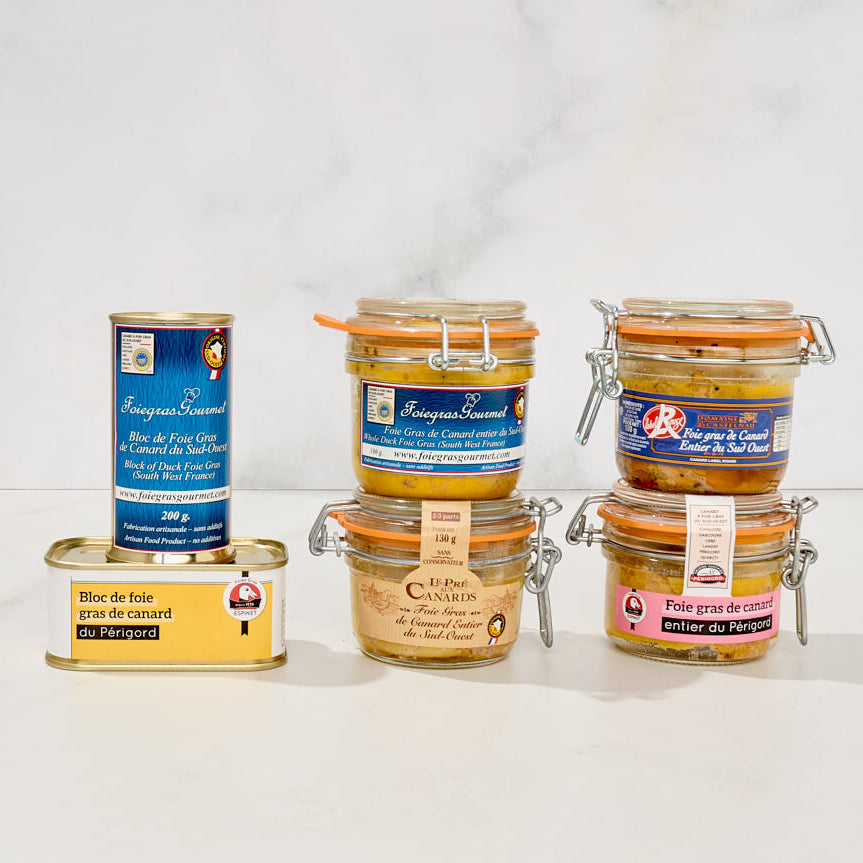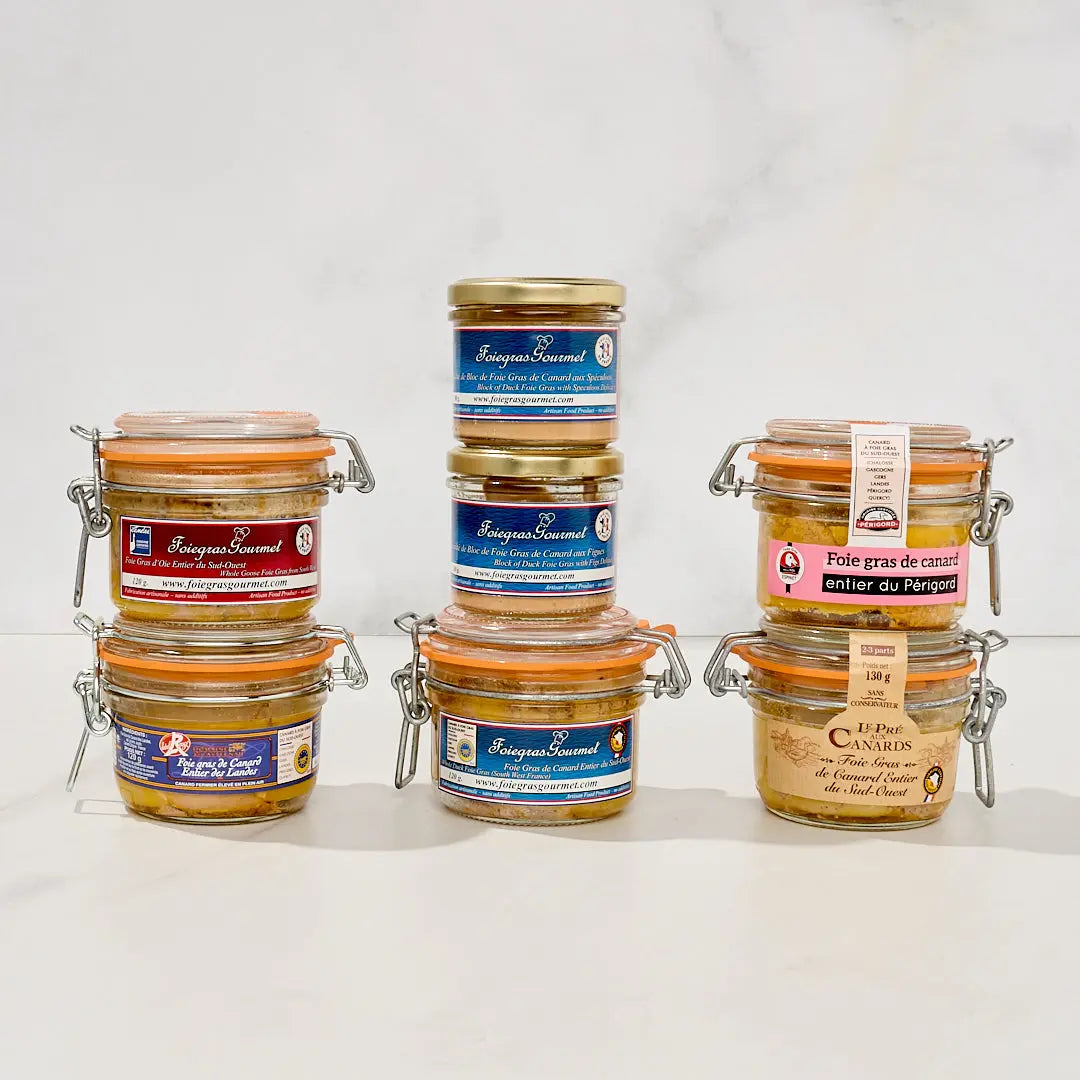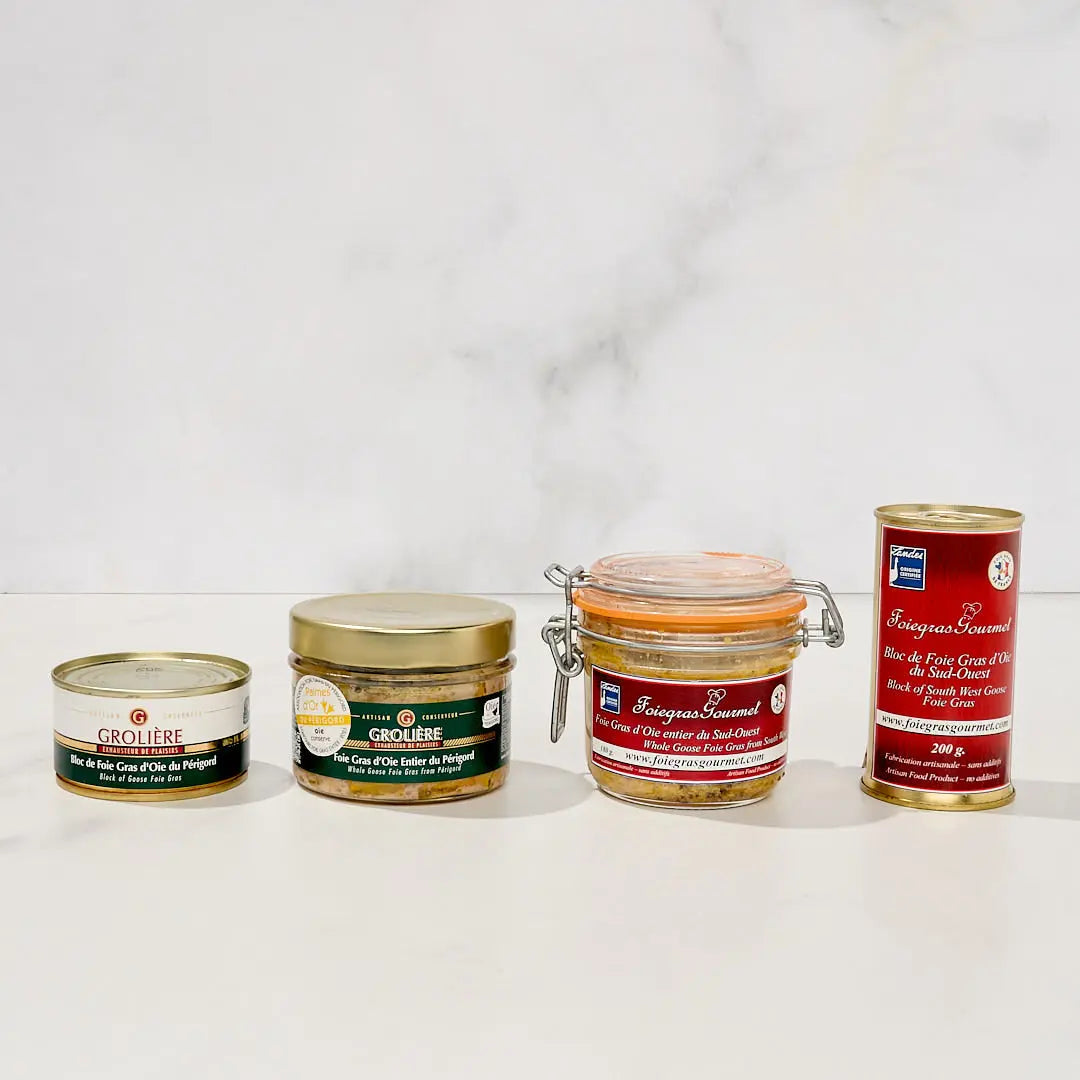How to identify the quality of foie gras?
It is very easy to find foie gras in France, although a little more difficult in other countries (not impossible). After finding where to buy foie gras, the question arises: which one to choose?
There are different qualities of foie gras, and that is why in France, we have labels that highlight the traditional flavor while being high-quality foie gras... but let's start with the interesting history of foie gras...

In the beginning, foie gras was produced by farmers and cooks, with the knowledge and expertise being passed from generation to generation. Until 1860, foie gras tended to be eaten where it was made. However, with the discovery of canning food as a means of preservation, its flavour became known across the country.
The recipe for foie gras is simple: foie gras, salt and pepper. However, good foie gras is dependent on the cook’s skill and the quality of the ingredients. Our ancestors knew how important it was to allow their cattle to graze peacefully in their pastures and to provide cereals for their geese and ducks.
In light of the success of the product, demand became increasingly important and the foie gras began to be exported to major cities, moving away from local consumption at the family farm or the local restaurant. High-end restaurants wanted to acquire the product to offer it on their menu.
Slowly, from the 1960s onwards, the product began to be produced commercially. Some small factories grew up but much larger operators attracted by the potential profits they could make, looked to using or adapting their existing processes to manufacture foie gras. Through reducing production costs, and thus lowering prices, they were able to drive profit even higher. Why feed the ducks on maize when flour would do? Why let them roam free when they could be caged and fed antibiotics like battery hens?

For the large manufacturers to succeed, they needed to use the hypermarkets as their route to market, with their demands for ever-lower prices and standardisation of products. Worse, they began to use clever marketing to fool customers into believing they were buying a quality, traditionally made product: expensive looking labels, brand names conjuring images of the highest quality products etc.
This is how certificates were created that guarantee the quality of foie gras.
The IGP(Protected Geographic Indication) certification South-West

Throughout the 1980s, local foie gras producers saw their only means of growing their business was to compromise on quality. They came together and drew up a quality charter which resulted in the introduction of PGI which is the equivalent of the Appellation given to wines. The introduction of production standards has undoubtedly resulted in better quality products.
More demanding production conditions have undoubtedly improved the quality of foie gras.
Clearly, some of the industrial producers have, of course, obtained the right to use this mark of quality and arguably comply with the required standards. There is nothing to prevent a factory employing 500 people from producing foie gras and using the PGI, even if this goes against the spirit of PGI.
Certification Red Label, superior foie gras

Even before the establishment of the IGP, other producers based in the Landes chose to implement the Label Rouge. This quality label is awarded to certain food products, including foie gras, that meet specific production and quality standards. The Label Rouge is a registered trademark that guarantees that the product has been made according to strict criteria and local traditions, which distinguishes it by its quality and authenticity.
This label is unfortunately applied by too few producers because it is very demanding. But today it is nonetheless the quality of very good foie gras.
Périgord Goose: The quality of foie gras from French Périgord

The Périgord Sector has decided to identify its products under the name "Périgord Goose", while many companies are dedicated to importing foie gras from other cheaper countries that do not comply with the strict regulations to produce quality foie gras. This brand is part of the protected designations of origin (AOC - Appellation d'Origine Contrôlée) that guarantee the quality and authenticity of the foie gras produced in this specific terroir.
Certification Origin France
It is a designation that means nothing, except that the foie gras is packaged in France. There are foie gras that have the "Origin France" label which comes in addition to other recognized labels (like Goose from Périgord), in which case everything is fine. However, if you find a foie gras with only the "Origin France" label, keep reading...
In French hypermarkets, we are seeing more and more foie gras with the label "Origin France" which unfortunately covers very different realities. From the very good (a small producer not based in the South-West who will produce a good quality foie gras), to the less good (animals raised in France often in the Loire and West of France with a poor grain diet) to the worst: imported products from Eastern Europe, where only the foie gras is transported by refrigerated trucks to be jarred in gigantic factories based in France.
Of course, in hypermarkets, it is unfortunately rare to find products from small producers as well as to see noted that the canned foie gras comes from Eastern European countries. If one day you find foie gras "Made in Hungary", "Made in Bulgaria" or rather "EU Origin", there is little chance that it is of the highest quality.
There are many companies dedicated to producing excellent foie gras but there are also many others who want to sell cheap products but of uncertified origin, with less pleasant flavors and textures that do not identify not a traditional foie gras. This is why you should always look for these labels.
On the other hand, having these labels does not mean that all foie gras have the same taste or the same texture, nor even that the quality is exactly the same, since each producer brings their unique touch to it. In the same way that you can find a good wine from Médoc or Sauternes, you will also find different foie gras. Try different brands that carry these labels and you will then identify which is your favorite foie gras.
At Foie Gras Gourmet, we offer you a carefully selected range of products from the South-West of France, where quality, respect for the breeding and production of ducks and geese, as well as the commitment of each producer, come together to provide you with products of exceptional quality. Each of the products we offer is unique and different so that you can choose the foie gras that best matches your preferences and tastes.












Leave a comment